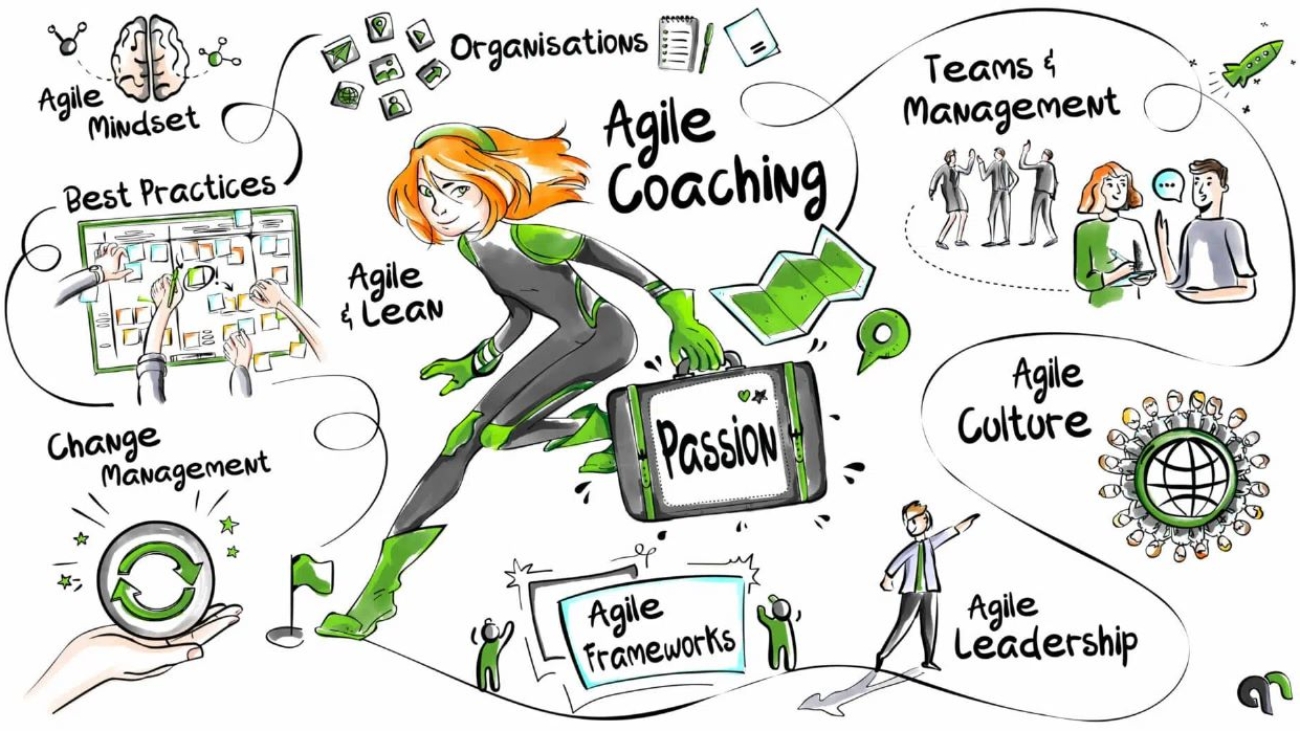In today’s rapidly evolving business landscape, traditional leadership approaches are giving way to a more adaptive and responsive model known as agile leadership. As organizations navigate through uncertainties and disruptions, agile leadership stands out as a vital strategy for staying competitive and thriving in a changing world. This article delves into the significance of embracing flexibility in leadership, with workplace examples that make the concept relatable. Additionally, we explore the role of agile coaches in aiding leaders to embrace flexibility effectively.
Background
The world of business has undergone profound transformations, from technological advancements to market dynamics. In this dynamic landscape, rigid leadership styles that once served well are no longer sufficient. Embracing flexibility has emerged as a key attribute of successful leadership, particularly in the context of agility.
Embracing Flexibility: A Necessity in a Changing World
Agile leadership is characterized by its adaptability, responsiveness, and openness to change. Leaders who embody flexibility can swiftly adjust their strategies and approaches based on evolving circumstances. Take the example of a technology company that has been using the same product development process for years. When they recognized a shift in customer preferences towards more personalized solutions, the leadership swiftly adapted their approach to cater to these changing demands. This agility enabled them to capture new market segments and enhance customer satisfaction.
Flexibility is no longer a luxury but a critical requirement for leaders to succeed in navigating the complexities of a changing world, it helps with:
- Adaptability in Uncertainty: Rapid changes demand leaders who can pivot their strategies to stay competitive.
- Dynamic Customer Needs: Flexibility allows leaders to tailor products and services to evolving customer preferences.
- Navigating Technological Advancements: Embracing new technologies ensures organizations remain innovative and efficient.
- Employee Engagement and Well-being: Flexible work practices boost morale and attract top talent.
- Fostering Innovation: Flexible leaders create environments where creativity and risk-taking thrive.
- Resilience in Disruption: Adaptable strategies minimize the impact of unexpected disruptions.
- Inclusive and Collaborative Cultures: Flexible leaders value diverse perspectives, leading to better decisions.

Workplace Examples of Embracing Flexibility
Remote Work Transition: The COVID-19 pandemic forced many organizations to adopt remote work models overnight. Companies with leaders who embraced flexibility smoothly transitioned, utilizing technology to maintain productivity and employee engagement. Flexible leaders focused on outcomes rather than micromanagement, allowing teams to work in ways that suited their individual situations.
Inclusive Decision-Making: Flexible leaders encourage diverse perspectives in decision-making. A manufacturing company, for instance, achieved remarkable cost savings by involving employees from various departments in the process of identifying operational inefficiencies. This inclusive approach not only improved their processes but also boosted employee morale.
Agile Project Management: A marketing agency faced a tight deadline for a client campaign. The leader, instead of adhering to a rigid project plan, empowered the team to make real-time decisions and adjust strategies as needed. This approach ensured the timely delivery of the project while fostering innovation and creativity.

The Contribution of Agile Coaches to Embracing Flexibility
Agile coaches play a pivotal role in guiding leaders and teams toward adopting flexibility. They facilitate a shift in mindset and provide the tools and techniques needed to navigate uncertainties effectively. An agile coach helps leaders recognize the value of continuous learning and experimentation. They encourage leaders to create an environment where failure is seen as an opportunity for growth rather than a setback.
Agile coaches also assist in promoting open communication and collaboration. In a rapidly changing environment, information flows need to be seamless for quick decision-making. Agile coaches help leaders establish practices that facilitate transparent communication across teams and departments.
Conclusion
Embracing flexibility is no longer a choice; it’s a necessity for leaders in a changing world. Agile leadership, characterized by its adaptability and responsiveness, is the key to thriving in today’s business landscape. By examining workplace examples, it’s evident that leaders who embrace flexibility effectively drive innovation, inclusivity, and improved decision-making.
The role of agile coaches in this journey cannot be overstated. They serve as guides, helping leaders transition towards agile practices and fostering a culture of adaptability. As businesses continue to face challenges and opportunities, agile leadership will remain an essential driver of success, ensuring organizations remain resilient and future-ready.
In conclusion, embracing flexibility isn’t just a leadership approach; it’s a transformative mindset that positions leaders and organizations to seize opportunities and navigate uncertainties effectively.
Ready to lead with agility in a changing world? Discover how embracing flexibility and working with agile coaches can transform your leadership approach. Contact Auxano Consulting today.
Feel free to connect with Linnet Dave, Auxano’s Director and Executive coach on linnet@auxano-consulting.com or connect with her at +919820668179 for any queries on the subject and if you need to get a customized learning Intervention done for your organization.
Written by Vineeta, Image sources: http://www.qualityminds.com; http://www.sabine-hahn.com; http://www.organimi.com






